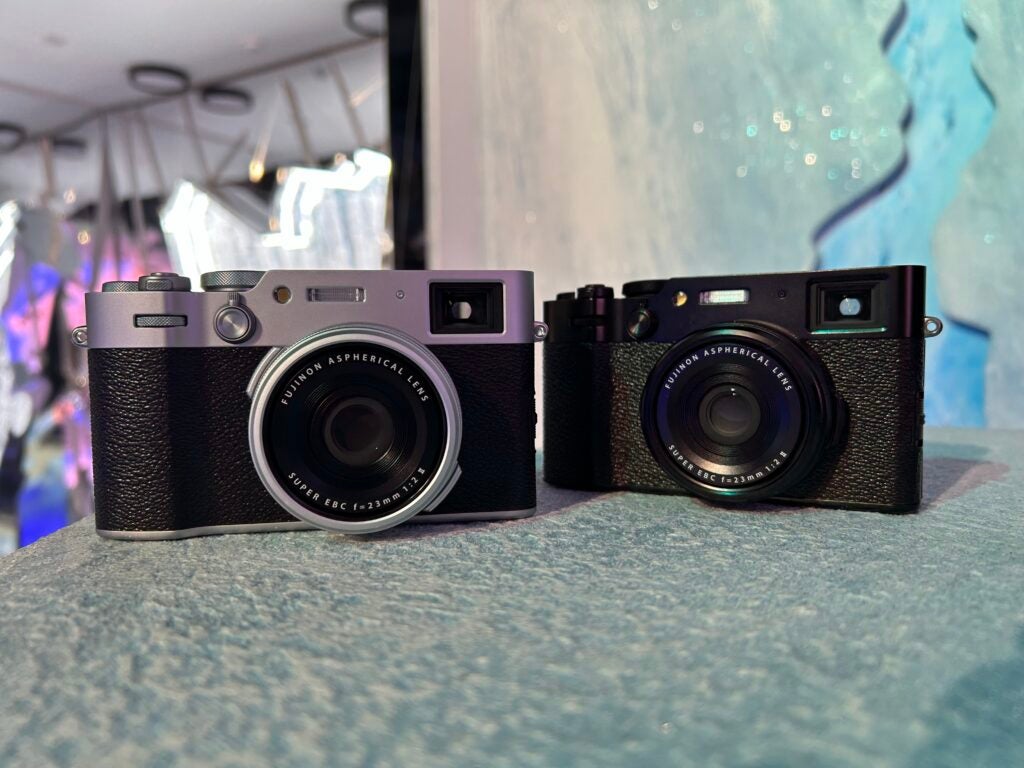Fujifilm recently unveiled the Fujifilm X100VI – the latest update in the Japanese brand’s well-loved X100 series. Here’s how it compares to Ricoh’s top-of-the-line compact camera, the Ricoh GR IIIx.
The Ricoh GR III is a small and speedy camera that produces detailed, distortion-free images and the Ricoh GR IIIx includes many of the same specs and features with a larger 40mm equivalent lens. The Fujifilm X100VI, meanwhile, includes a 35mm equivalent lens.
Keep reading to learn how these two cameras compare.
The Fujifilm X100VI sensor packs more megapixels
One of the biggest upgrades on the Fujifilm X100VI this year is its higher-resolution sensor.
The compact camera is equipped with a 40.2-megapixel X-Trans CMOS 5 HR APS-C sensor which makes it possible to snap sharp and detailed stills without lugging around a large camera.
The Ricoh GR IIIx is known for its incredibly sharp and detailed images. The camera includes a 24.2-megapixel APS-C CMOS sensor that can handle large-size prints and is paired with a high-resolution lens for high-definition detail reproduction.


The Ricoh GR IIIx should perform better in low-light conditions
When it comes to low-light scenes, the Ricoh GR IIIx is better equipped for the job with its incredibly wide ISO range.
The camera ranges from ISO100 to ISO102400, resulting in reduced noise, high resolution and accurate colour reproduction.
The Fujifilm X100VI features an ISO range of ISO125 to ISO51200, with the former a new addition to the camera as the previous model only offered ISO125 as an extended sensitivity.
The Fujifilm X100VI offers more subject-detection modes
When it comes to detecting and tracking different subjects, the Fujifilm X100VI offers more variety.
The X100VI can recognise and track faces, eyes, animals, birds, cars, motorcycles, bicycles, aeroplanes, trains, insects, and drones. The Ricoh GR IIIx, on the other hand, only offers face and eye detection.


The Ricoh GR IIIx includes a built-in macro mode
One feature you may find useful on the Ricoh GR IIIx is the built-in macro mode.
If you’re one for macro photography, this is a handy addition to the compact camera as it is designed to work perfectly with the fixed lens. The focus range is 12 to 24cm, creating bokeh at close distances.
The camera also includes a dedicated macro button, making it easy to toggle the mode on and off.
The Fujifilm X100VI delivers stronger video performance
Fujifilm has also given the X100 Series a video resolution boost this time around, increasing the resolution from 4K/30p on the X100V to 6.2K at up to 30p cropped or 4K at up to 60p on the X100VI.
The X100VI also supports F-Log, F-Log 2 and 4:2:2 10-bit recording internally.
When it comes to video, the Ricoh GR IIIx is limited to just 1080p at up to 60p. Where the Fujifilm X100VI could pass off as a hybrid in some instances, the Ricoh GR IIIx is very much a stills-first camera.













